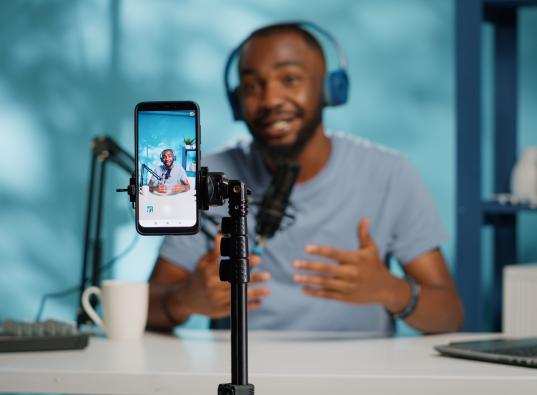The New Reality of B2B Marketing: The Imperative of Online Visibility
Thu, 04/08/2016 - 07:17In our B2B marketing guidebook, Business-to-Business Marketing: A Step-by-Step Guide, published by Penguin Random House, my co-author Mark Eardley and I note that the Internet has fundamentally changed behavior in the buying decision cycle, creating what we term the phenomenon of the self-sold customer.
The fourth and final article in this short series explores how to respond to digitally altered behavior in the buying cycle, deliver content to where it is most needed, and focus on the proven sales-generating power of SEO.
Altered Realities Demand Altered Responses
By empowering purchasers to conduct their own research online, the Web has created a "closed" environment—i.e., one isolated from pushy salespeople—where buying decision-makers are increasingly determining which vendors they want to procure from before the suppliers are even aware they're under consideration.
As Mark Eardley wrote in the second article in this series about the role of content in the buying decision cycle, the fundamentals rules of B2B marketing have not altered since the days of the famous McGraw-Hill advert, "The Man in the Chair."
Buyers continue to look for answers to key questions: They still want to assess market trends, validate their own needs, and establish the credibility of companies and the veracity of their claims about their products and services.
But instead of waiting for a salesman to come calling, they're finding answers by tapping at a keyboard and staring at a screen. Accordingly, it is imperative for businesses both to be visible online and to ensure they coherently present content that provides appropriate answers at each stage of the buying cycle.
The trend toward self-research has contributed to the explosive growth of content marketing: Companies spend 28% of their marketing budget on content marketing. Yet, much of content misses the mark: Just 30% say it delivers effective results.
One of the primary reasons for this dissatisfaction is that content producers simply aren't using digital—the very environment in which their prospects live—to amplify their content effectively.
Of the three environments in which brands can promote content—paid, owned, and earned—there's an over-reliance on paid tactics: Google Ads, promoted social posts, content recommendation/discovery widgets, and native advertising have become the go-to default mechanisms B2B content marketers use to take their ideas to market.
That's bad for two reasons:
- An over-reliance on the paid channel promulgates a tendency to produce lackluster content. If marketers know that by putting some spend behind their content they can achieve impressive KPIs on reach and visibility (if not sales), it encourages them to release content that might not really speak to the audience's need. Quantity begins to overtake quality as a primary performance metric.
- More fundamentally, although paid promotion does generate exposure and can bring new leads into the funnel, it lacks authenticity; the audience sees it for what it is—an advertisement. One needs only to compare paid conversion rates to those generated from earned tactics: Paid is clearly less effective.
Anyone seriously considering using native advertising to support content promotion really should watch John Oliver's entertaining polemic on Last Week Tonight. He clearly hit a nerve, considering that the YouTube video of his rant has racked up more than seven million views in the last couple of years.
The Higher Effectiveness of Owned and Earned Content
To maximize their content marketing effort in pursuit of profitable sales, B2Bs must place more emphasis on owned and earned channels.
In the owned space, a website serves one purpose: to expose buying-decision influencers to your proposition and elicit an action from them.
That means significant time and effort put into mapping out the customer journey and building a clear and coherent design that allows influencers to find credible, relevant information quickly and intuitively.
Although brands have become more aware of this necessity in recent years, far too many still fall short on building a productive experience for digitally savvy users who are confident in selling to themselves.
Extra-Special Delivery: The Right Content in the Right Place
Shortfalls in the digital experience are particularly evident in mobile browsing. Business decision-makers aren't always sitting behind their desk when they conduct their research. The advent of second and third screens means they're just as likely to be browsing their tablet in the evening or checking stuff on their cell phone in the airport departure lounge. As long ago as 2013, a study by Forbes magazine found that more than a quarter of executives had used mobile devices to conduct research for purchases exceeding $100 000.
Mobile-first Web design doesn't simply mean having a responsive site. There's little point in having a site that renders beautifully on an iPhone if the actual content that resides on the site—PDFs, infographics, or simple blog posts—is unreadable.
The fact that many businesses still overlook the need to provide true mobile-friendly design is all the more puzzling given Google's well publicized move to favor websites that offer a good mobile browsing experience.
According to the search giant, 89% of people looking to make a B2B purchase use the Web when doing research, with 71% starting off with a generic search.
Search Rescues Content from Oblivion
The undeniably powerful influence of the Web means that gaining the endorsement of search engines—by encouraging them to list your content prominently in their search results—is probably the most impactful form of earned promotion available to content marketers looking to influence decision-makers.
Despite its proven effectiveness, search remains an underused tactic—perhaps because implementing an effective SEO strategy can be hard work. One relatively recent research report among senior UK marketers found that just 21% of marketing decision-makers include it as a line item in their budgets.
As a tactic that combines clever technical skills related to website architecture with solid online PR and social media savvy, SEO can be intimidating. All the more so given the heavy penalties search engines can apply to websites they think are gaming their algorithms. Nevertheless, the likelihood that organic search will translate into qualified leads is spectacularly high. HubSpot's ultimate list of marketing stats cites a Search Engine Watch study suggesting SEO-generated leads have a 14.6% close rate.
Being visible in digital—particularly through channels and platforms that provide an endorsement of the credibility and authenticity of content—is an imperative for B2B marketers looking to fulfill the needs of self-sold customers.
Achieving visibility, however, requires much more than a "spray and pray" approach to marketing. It necessitates a clear understanding of how the Web can help you profile your audiences, their location in the buying cycle, and the factors that will likely influence their decision to engage with you.
But that's hard work—which probably explains why 70% of content marketers say their content marketing doesn't work as it should.
This article first appeared on MarketingProfs.
Need Assistance with Digital Strategy?
Rogerwilco’s team of strategists, business analysts and data scientists is here to help.





